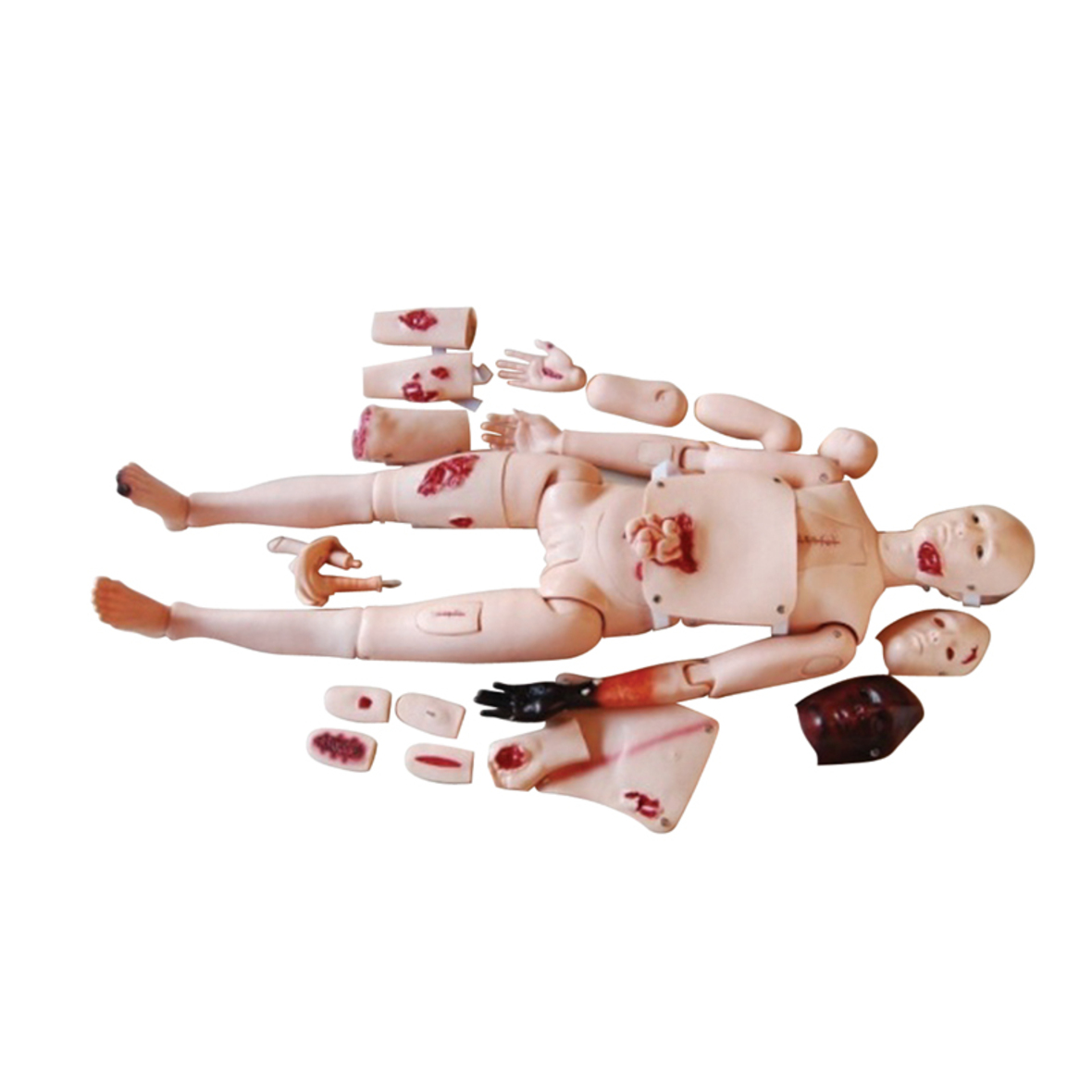10-05-2024
ADA MED SUPPLY LIMITED
Article tag: Trauma simulator Trauma model
Trauma simulators have become an indispensable tool in modern medical education and first aid training. From simple models to highly simulated combat training equipment, trauma simulators continue to advance medical education and first aid skills. Below, we will explore the value of trauma simulators in practical applications and the direction of future exploration.

First, trauma simulators play a crucial role in medical education. By simulating real trauma scenarios and patient responses, trauma simulators are able to provide students with a safe, risk-free practice environment. In this environment, students can practice various first aid skills repeatedly, so as to master various operational skills. Compared with traditional theoretical teaching, trauma simulators can make students more intuitive to understand the complexity and variability of trauma and improve their practical ability.
Secondly, trauma simulators also play an important role in actual combat training. In the simulated real scene, first responders can face a variety of complex trauma situations and carry out real emergency treatment and rescue operations. This training can help first responders better adapt to the pressures and challenges in real situations and improve their resilience and collaboration. At the same time, trauma simulators can provide immediate feedback and assessment to help first responders identify and correct errors in a timely manner and improve training effectiveness.
With the continuous development of science and technology, the function and the degree of imitation of trauma simulators are also improving. Modern trauma simulators have been able to simulate more complex physiological responses and pathological changes, and can even simulate real vital signs such as bleeding and breathing. These advanced functions make the trauma simulator more close to the real scene, and provide a more realistic experience for medical education and actual combat training.
However, the application of trauma simulators still faces some challenges and limitations. For example, trauma simulators are expensive and require a lot of money to purchase and maintain. In addition, the operation and maintenance of trauma simulators also require professional knowledge and skills, which puts higher demands on training personnel. Therefore, in the future, we need to further explore how to reduce the cost and improve the ease of use of trauma simulators in order to better serve medical education and combat training.
In short, from models to actual combat, trauma simulators play an important role in medical education and first aid training. In the future, we need to further explore its application and development direction to promote the continuous improvement of medical education and first aid skills.